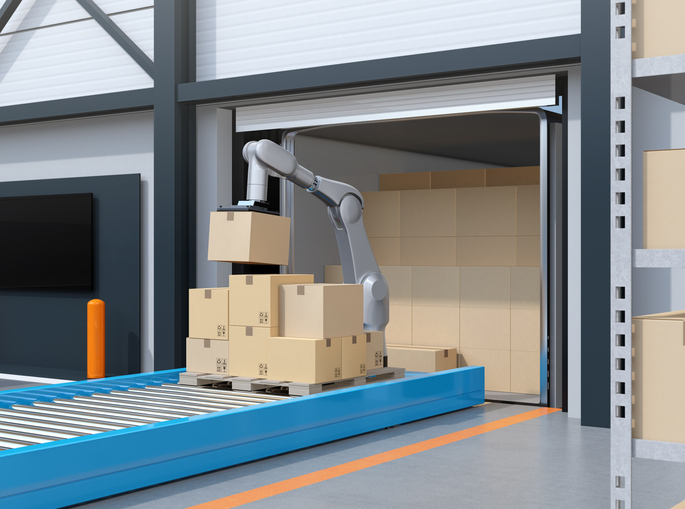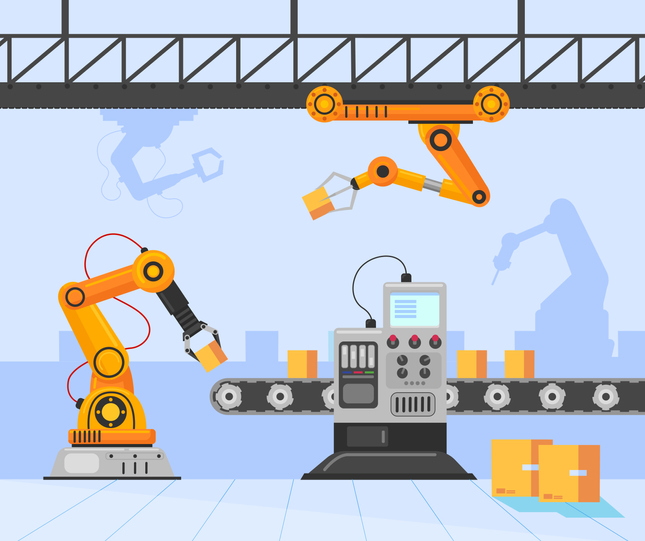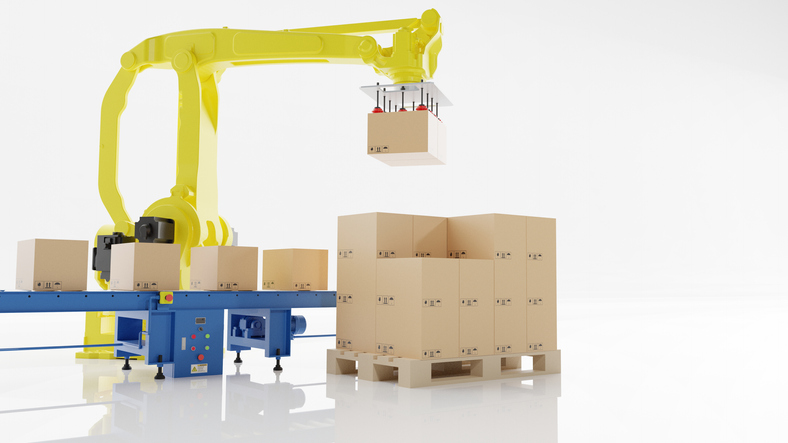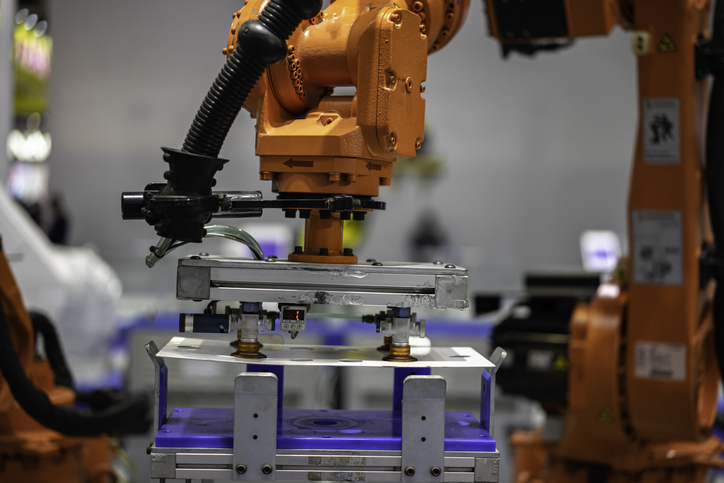In the dynamic landscape of modern logistics and warehousing, efficiency is the key to staying competitive. One of the critical aspects of warehouse operations is the receiving process, where goods are unloaded, sorted, and prepared for storage. Traditional methods often involve manual labor, which can be time-consuming, error-prone, and physically demanding. However, the advent of the palletizing robot and the depalletizing robot has ushered in a new era of automation, revolutionizing the receiving process and offering a myriad of benefits for businesses.
The Rise of Depalletizing and Palletizing Robots
Depalletizing robots, also referred to as robotic depalletizers, are intelligent machines meticulously designed to effectively handle the unloading of goods from pallets. Through the integration of advanced sensors, computer vision, and state-of-the-art robotic arms, these sophisticated robots showcase their ability to identify, grasp, and move items with utmost precision and efficiency. By employing their articulated robotic arms, these depalletizing robots expedite the receiving process while minimizing the likelihood of human error and potential damage, thus significantly enhancing overall operational accuracy.
The distinction between palletizing and depalletizing lies in their interaction with the different processes within your production workflow. Palletizing tasks commonly follow upstream packaging activities, such as sealing, labeling, and case erecting. This signifies that palletizing serves as the concluding step in the packaging process, where products are systematically placed on pallets for storage or transportation purposes.
However, depalletizing tasks take place at the outset of your workflow. As the initial step, depalletizing involves unloading goods from pallets to facilitate further processing. These tasks seamlessly interact with subsequent activities like picking, sorting, and unpacking, ensuring a streamlined flow of operations.
By juxtaposing these two processes, it becomes evident that palletizing occurs after the completion of upstream packaging tasks, while depalletizing initiates the workflow, setting the stage for downstream activities. This comprehensive understanding of the differences between palletizing and depalletizing provides valuable insights into their distinct roles and contributions within the production process.
How does robot vision differ between palletizing and depalletizing?
Depalletizing robots use advanced sensors, computer vision, and robotic arms to identify, grasp, and move items efficiently. Computer vision and sensors enable depalletizing robots to accurately identify products, ensuring the right items are directed to the correct storage locations.
One key aspect that sets depalletizing robot vision apart from palletizing is the ability to handle the uncertainty of unloading pallets. Depalletizing applications often encounter various unknown variables, making it crucial to incorporate robot vision systems. By adding vision-sensing capabilities, depalletizing robots gain the flexibility to adapt to changes and effectively handle different scenarios.
While the inclusion of vision sensing does add complexity to robotic applications, it greatly enhances the system's ability to handle the challenges of depalletizing. This means that depalletizing robots require more advanced and adaptable vision systems to accurately recognize and handle the diverse range of products they encounter on pallets.
By leveraging computer vision technology, depalletizing robots can precisely identify items on a pallet, ensuring that the correct products are directed to their designated storage locations. These advanced sensing capabilities enhance the overall efficiency and accuracy of the depalletizing process, reducing errors and optimizing workflow.
In summary, depalletizing robots employ advanced sensors, computer vision, and robotic arms to efficiently handle the unloading of goods from pallets. The incorporation of vision sensing allows these robots to effectively deal with the uncertainties and variations that arise during the depalletizing process. This ensures accurate identification and placement of items, improving overall productivity and reliability in depalletizing applications.
Key Advantages of Depalletizing Robots in Receiving Processes
Speed and Efficiency:
- Depalletizing robots can work at a consistent pace, 24/7, without the need for breaks or shifts, significantly accelerating the receiving process.
- The speed and efficiency of these material handling robots reduce bottlenecks in the material flow, ensuring a smooth flow of goods from the receiving dock to storage areas.
Accuracy and Precision:
- Computer vision and sensors enable depalletizing robots to accurately identify products, ensuring the right items are directed to the correct storage locations.
- This precision minimizes errors in inventory management and order fulfillment, leading to improved customer satisfaction and reduced costs associated with order discrepancies.
Adaptability and Flexibility:
- Depalletizing robots are designed to handle a wide range of products, sizes, and packaging types.
- Their adaptability makes them suitable for diverse industries, allowing warehouses to process various goods without the need for reprogramming or reconfiguring the robotic system.
Safety and Ergonomics:
- Automation with depalletizing robots reduces the physical strain on human workers, as heavy lifting and repetitive tasks are transferred to the robotic system.
- Improved safety protocols, including collision detection and avoidance features, contribute to a safer working environment.
Cost Savings:
- While the initial investment in depalletization robots may seem significant, the long-term cost savings are substantial.
- Increased efficiency, reduced labor costs, and minimized errors contribute to a rapid return on investment for businesses implementing this technology.
How can you decide if you need a palletizing or depalletizing robot?
Deciding whether you need a palletizing or depalletizing robot can be determined by asking yourself several important questions. These questions will guide you toward finding the most suitable solution for your unique situation:
1. Assessing Workflow: Take a close look at your workflow and identify where the majority of bottlenecks occur. Is the inefficiency primarily at the beginning or end of the process? This assessment will help you understand which type of robot, palletizing or depalletizing, would be more beneficial to alleviate those bottlenecks.
2. Placement Considerations: Determine the ideal location in your facility for the robot. Depending on the size and layout of your workspace, you may need to consider factors such as space availability, accessibility, and integration with existing equipment. This assessment will guide you toward choosing the right type and size of robot for your facility.
3. Singular or Multiple Robots: Evaluate whether it is feasible and more efficient to have a single robot perform both palletizing and depalletizing tasks or if it would be more beneficial to employ multiple robots for each specific task. Factors such as workload, task complexity, and space limitations should be taken into account when making this decision.
4. Throughput Analysis: Analyze the predicted throughput of products for both palletizing and depalletizing tasks. Determining the expected volume and rate of products that need to be handled will help you select a robot that can efficiently meet your production requirements.
By considering these questions and evaluating your unique situation, you will be able to determine whether a palletizing or depalletizing robot, or a combination of both, is the most suitable solution for your facility. Additionally, reviewing case studies of companies that have successfully implemented robotic palletizing solutions can provide valuable insights into how others have addressed similar challenges.
How does the location in the facility differ between palletizing and depalletizing?
The location of the robot in the facility differs between palletizing and depalletizing tasks. When palletizing or depalletizing, it is generally recommended to position the robot near the preceding or subsequent processes in the workflow. If the production quantities are low, it might be possible to use the same robot for both tasks. In such cases, careful consideration needs to be given during the design phase of the robot cell to ensure it fits into the facility layout appropriately.
Do you need to treat palletizing and depalletizing tasks differently?
When considering the tasks of palletizing and depalletizing, it is crucial to acknowledge the differences between the two and understand why they may require unique treatment. Palletizing refers to the process of arranging items onto a pallet for storage or transportation, while depalletizing involves the removal of items from a pallet.
These tasks differ primarily in terms of their objectives and the handling required. Palletizing focuses on efficiently and securely stacking items onto a pallet in a specific pattern, often taking into account weight distribution and stability during transportation. Depalletizing, on the other hand, involves careful removal of items from a pallet without causing damage or disruption.
Additionally, the complexity of these tasks varies. Palletizing can be challenging as it requires proper coordination and precision to ensure that items are stacked correctly and safely. On the contrary, depalletizing may present difficulties in terms of identifying and gripping individual items to be removed, as well as maintaining their integrity during the process.
Considering these distinctions, it is essential to recognize that the same robot may not be inherently suitable for both palletizing and depalletizing tasks. The robot must be equipped with the appropriate end-of-arm tooling, grippers, or suction cups designed specifically for the task at hand. Factors such as weight, shape, and fragility of the objects being handled may influence the selection of a robot capable of performing either palletizing or depalletizing tasks efficiently.
In conclusion, given the differences in objectives, handling requirements, and complexity between palletizing and depalletizing, it is necessary to treat these tasks differently. Proper analysis of the specific requirements for each job is fundamental in deciding whether a robot is capable of effectively performing both tasks or if separate robots with distinct capabilities are required.
Is one task harder to achieve with a robot than the other?
When considering the difficulty levels of palletizing and depalletizing tasks, it is commonly acknowledged that depalletizing tends to be more intricate. While both tasks can be performed by robotic systems, depalletizing typically requires a more complex setup to achieve successful results.
Conclusion
Palletizing and Depalletizing robots have emerged as a game-changer in optimizing receiving processes within warehouses. Their ability to enhance speed, accuracy, adaptability, and safety makes them a valuable asset for businesses seeking to streamline operations and gain a competitive edge. As technology continues to advance, the integration of depalletizing robots is likely to become increasingly prevalent, reshaping the future of warehousing and logistics. Contact us today to determine if depalletization robots or other industrial robots could enhance your operations.





